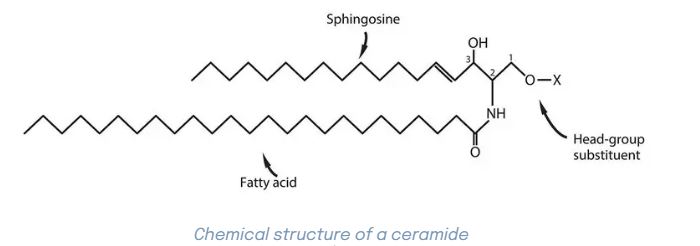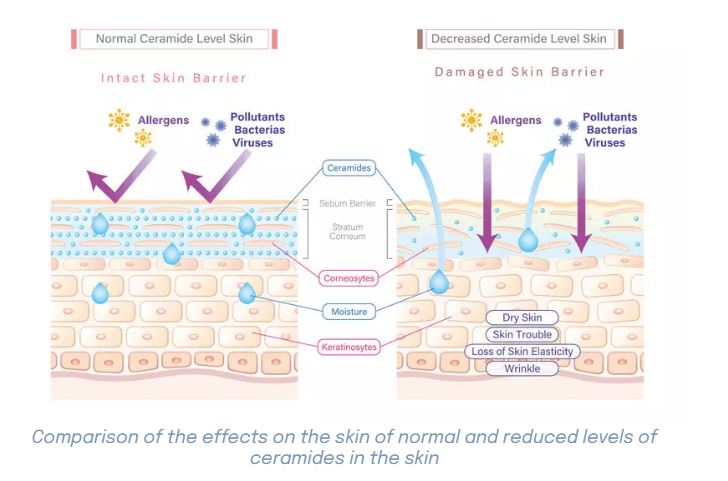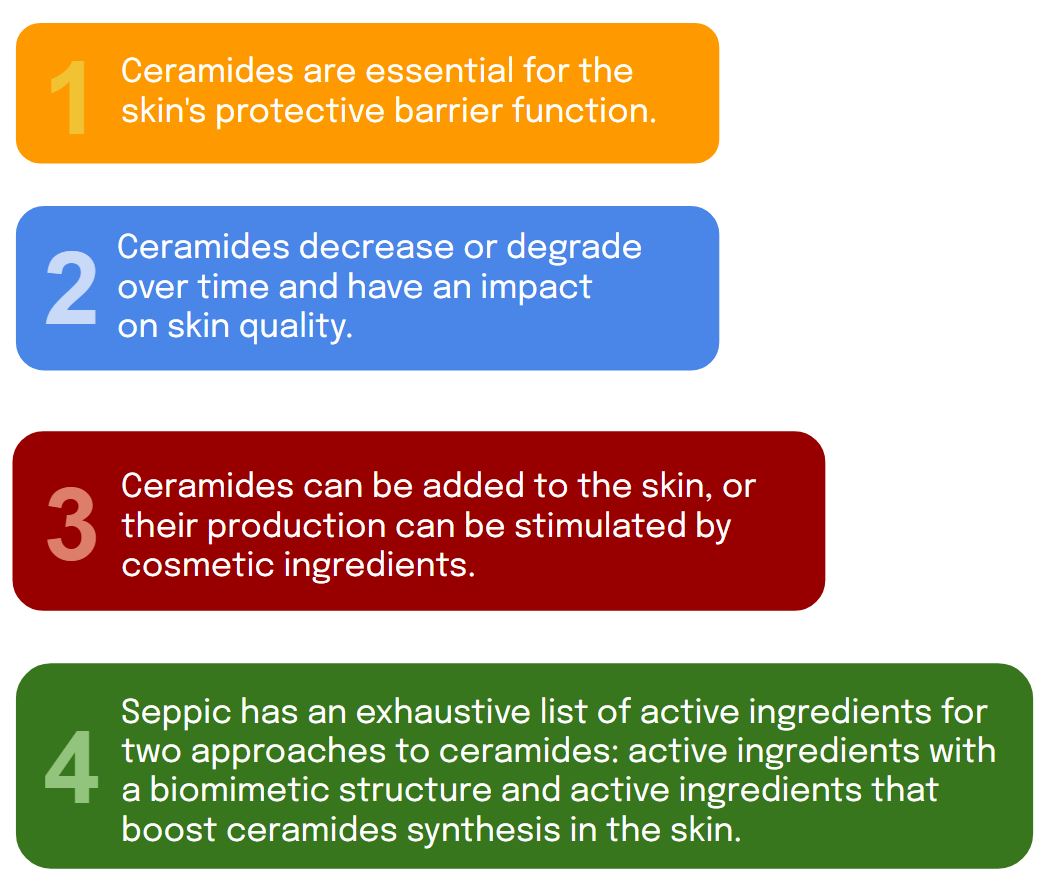
Explore The Advantages of Ceramides for The Skin
March 26, 2024
Ceramides constitute 50% of the epidermal lipids but decrease in both quantity and distribution as one ages. They play a crucial role in maintaining a healthy skin barrier, underscoring the significance of controlling their levels with skincare products.
Let's dive into the ceramides in the skin, their roles, and the ways we can optimize them in the skin.
What are ceramides?
Ceramides are a family of structurally heterogeneous lipids which belong to the sphingolipids group (complex lipids derived from the sphingosine molecule). They are obtained by combining a fatty acid with a sphingosine base via an amide bond. Several ceramides have been identified, in varying proportions and differing in structure. Ceramides have been classified according to the number of carbon atoms in the fatty acid in question (between 16 and 36 carbons), its degree of unsaturation (saturated or monounsaturated), and the length of the chains of sphingoid residues. In the Stratum corneum, ceramides NS (21%), NP (13%), AS (18%), and NH (22%) are predominant (Drakou et al., 2021).
Similar structures are found in many living organisms, such as plants and animals. In humans, ceramides are essential lipids in the outermost layer of the epidermis, known as the stratum corneum, because of their role in the formation of the lipid bilayer, giving the skin the impermeability it needs for optimal barrier function.
What are the ceramides' functions in the skin?
Synthesized by keratinocytes, which are the primary cells in the epidermis, ceramides play a crucial role in maintaining the skin barrier. They are vital for skin homeostasis as they form a key part of the lipid bilayer in the stratum corneum, ensuring hydration and shielding the skin from environmental exposures. A decline in ceramide quantity or quality can result in dry skin and various skin conditions like atopic dermatitis, psoriasis, acne, and seborrheic dermatitis.
Due to continuous environmental exposure, ceramides undergo hydrolysis and oxidation, causing significant changes in their amount and quality in both aged skin and skin disorders. The alteration in ceramides compromises the skin's barrier function, increases water loss, and makes the skin more fragile and prone to external factors. In the long run, decreased ceramide levels contribute to premature aging. Preserving ceramides is, therefore, crucial for maintaining healthy skin.
How can we enhance ceramides' quality and quantity in the skin?
Becoming hero ingredients, ceramides are widely recognized cosmetic active ingredients. There are two different approaches to ceramides:
- Ceramides are used topically or orally to maintain a supple, nourished, hydrated skin protected from dryness, irritation, and aging. These ceramides can have different origins: synthetic, animal, or plant. Whereas a synthetic version has been passed down through generations, plants contain ceramides, also known as phytoceramides, emerging with the rising demand for naturality, which shares a similar structure to skin ceramides, providing equivalent benefits.
Our CERAMOSIDES™ HP (Glycosphingolipids & glycolipids) is the perfect example. It is a unique patented complex of plant-based ceramides identical to those found on the skin (ceramide 2, 3, 8). It also contains Digalactosyl Diglyceride (DGDG) in synergy with ceramides as a performance activator.
CERAMOSIDES™ HP acts as a high-performance anti-aging shield. Ceramides are rich in omega 3, 6, and 9, moisturize and protect the skin from losing its elasticity and firmness. Pores are tightened and skin texture is visibly refined.
- Several ingredients can stimulate the production of ceramides in the skin, reinforcing its barrier function, as is the case with:
AQUAXYL™ (Xylitylglucoside - Anhydroxylitol - Xylitol), a patented combination of sugars that stimulates the synthesis of ceramides 1 & 2, while controlling the circulation of water and its reserves for an "anti-dehydration shield" action. These ex-vivo results are correlated in vivo to a reduction of the TEWL (TransEpidermal Water Loss) thanks to a reinforcement of the barrier function. Learn more about AQUAXYL™ (opens new window)
HETEROSIDES™ (Centella Asiatica Leaf Extract), a highly purified ingredient that regenerates the natural skin barrier for mature skin by stimulating the synthesis of ceramides 2 with a positive correlation proven in vivo with reduction of the TEWL.
NATIVE ESSENCE™ (Caprylic/Capric Triglyceride - Crithmum Maritimum Extract), an extract from "sea fennel", a rare halophytic marine plant. It has shown in vitro efficacy in boosting the synthesis of ceramides 3 & 6 on the reconstructed human epidermis, offering radiance, oxygenation, and complete protection to the skin, which is then sublimated.


